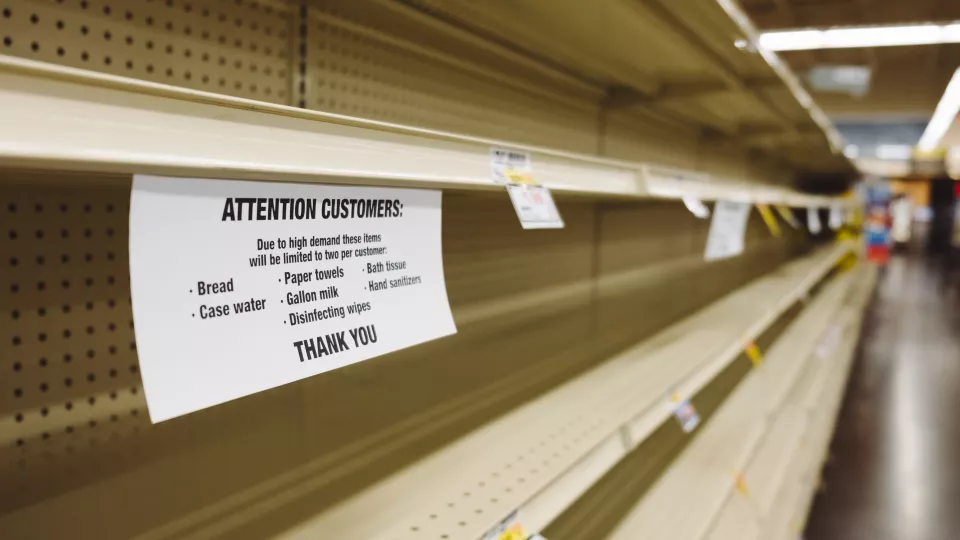Multiple critical incidents in the last few years provided evidence of the increasing uncertainty in the business environment, which is negatively impacting businesses and, of course, the retail sector. The list includes (but is not limited to): the recent pandemic; political unrest and wars (e.g., Ukraine); inflation, cost-of-living and cost-of-business crisis; labour shortages; trade wars and barriers (e.g., Brexit); increasing frequency of extreme weather events.
It is not surprising, therefore, that academic commentaries and the industry press often refer to a ‘perfect storm’ and multiple ‘black swan’ incidents that hit the retail sector with ‘one blow after another’. A term that illustrates well this phenomenon is the macro-environmental turbulence and refers to “changes in the business environment beyond the company’s control, including shifts in customer demand, geopolitical disruptions, natural disasters, and pandemics“ (Fiksel et al., 2015). High levels of macro-environmental turbulence lead to multiple, frequent, short- and medium-term disruptions which affect (in many cases simultaneously) almost every aspect of retail operations.
The current cost-of-living/cost-of-business crisis and the implications for the retail grocery sector provide an illustrative example of the above. On the demand side, there is a sudden shift in consumption patterns towards buying fewer, cheaper or different products (e.g., an increase in sales of comfort food has been reported as consumers are reducing the ‘eating out’ expenses). This has, naturally, implications for in-store operations such as on the range of products offered, sourcing, pricing and merchandising which should be adapted accordingly. Decisions need to be made quickly and solutions are not straightforward. For example, the demand for cheaper products may encourage retailers to offer a wider range of frozen food in stores. However, the viability of this solution is questionable given that the increases in retail store energy costs exceed 500% in some cases. On the supply side, sudden shifts in demand are disruptive and not welcome. The distribution channels, which are still recovering from the pandemic-related turmoil, need to work ‘harder’ to adapt to the new consumption patterns and the already low profit margins are being slashed further. Moreover, the need to keep prices as low as possible create conflicts in the retailer-supplier collaboration. Related disputes leading to empty shelves and disappointed customers are not unlikely. Long-term labour shortages in the retail and the logistics sectors are of course not helpful during this constant ‘firefighting’ either.
The need for a more-resilient-to-disruptions retail sector is, therefore, of a paramount importance. Resilience against disruptions is not a new concept either in the industry press or the academic literature. In the retail sector it has been examined in the contexts of town centres and high streets (e.g., due to recessionary shocks), retail supply chains, and recovering from extreme events and natural disasters such as earthquakes. A common denominator of the existing conceptual frameworks of resilience is a focus on maintaining the current order of things and on absorbing, withstanding and ‘returning to normal’ as quickly as possible after major disruptions. However, the increasing frequency of disruptions indicates that ‘returning to normal’ may not be desirable and that there is a ‘new normal’; that of high macro-environmental turbulence. For example, there is anecdotal evidence that the worldwide shipping problems will continue impacting the retail distribution channels for years. Similarly, the recent difficult weather conditions in the south of Europe and North Africa which disrupted food supply chains is an extreme weather example of the many others yet to come.
The ‘new normal’ dictates the re-evaluation of the current retail strategies and operational models. Retailers need to evaluate their performance and identify what doesn’t work anymore within a turbulent business environment. A strategic shift towards building resilience against disruptions already brings seismic changes to the market (e.g., less reliance on Just-in-time principles and on global distribution channels; more emphasis on vertical integration to enhance the control of the operations).
Another important point of consideration is that the retail sector should develop new capabilities to succeed in this ‘new normal’. For example, the increased demand volatility requires new demand management capabilities since forecasting using historical data is becoming obsolete. Retailers need to capture market trends faster. The necessary data have to be identified (are new sources of information required? e.g., from media or social media?) and the related analytical skills to be developed. More emphasis on direct communication with the customers can be fruitful too. During the pandemic, the grocery stores that used social media to communicate directly with their customers minimised demand volatility by mitigating panic buying phenomena. A culture of information sharing and trust among employees is required so that opportunities and threats are identified. Moreover, in such a turbulent environment front-line employees should be empowered (based on developed processes) to take initiatives and help retailers’ resilience endeavours.
The ‘new normal’ creates new challenges for the retail sector but opportunities too. Those retailers that will achieve the ‘evolutionary fitness’ within this turbulent business environment are more likely to realise a competitive advantage in the market while those who don’t will risk poor performance and failure.
